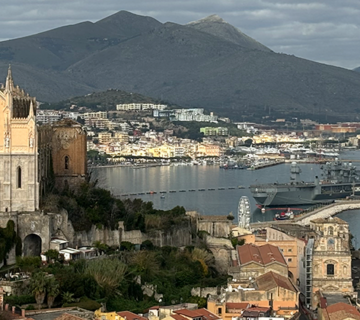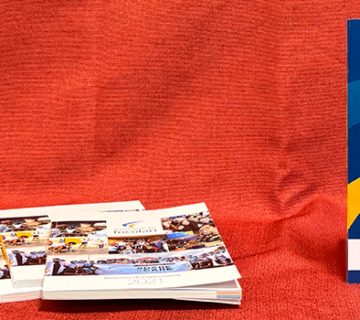
Dome of the Rock – (…) As I beheld the city from the bright blue coastline near to the hills that are dotted with thousands of houses, as our plane soared out over the water so that we could catch a first glimpse of the Palestine hills, I didn’t believe that Jerusalem and the Holy Places were going to make such a deep impression on my mind.
My stay in Palestine lasted seven days.
I don’t recall the schedule of our visits, but the places are deeply impressed in my mind: Bethpage, the Church of Saint Peter in Gallicantu, the stone steps of Jesus’ testament, Gethsemane, the Antonia Fortress where Pilate stood Jesus before the people and said: “Behold the man!” the site of the Assumption of the Blessed Virgin; the site of the ascension enclosed in a small kiosk; then there was Bethany and the road that leads from Jerusalem to Jericho, which is mentioned in the parable of the Good Samaritan; Bethlehem. . . a long list of such sweet names that neither life nor death will ever erase. At evening’s fall, raising my eyes to the sky, there were stars dripping light, skies that we never even dream of here in Italy, and I felt a strange and logical affinity between that firmament and those holy places. (…)
An old road to Jerusalem, an uphill climb, perhaps three meters wide, echoing the cries of merchants who are selling their goods on the left and on the right. People elbowing each other as they come and go, dressed in the most varied types of eastern designs.
You keep climbing and, as you pass through this bazaar – this is what the local people call it – you now and then come upon a doorway that you’re not sure belongs to the house or to a chapel: “Here is a station of the Cross, here’s the third station, here’s the fourth. . . Here is where Jesus met his Mother, here is where he met Simon of Cirene. . .” It was the road of the Via Crucis, the path that Jesus followed.
A few meters higher we are informed: “We’ve reached the sepulcher. Here in this church, held up with these powerful unsightly beams is the most sacred place imaginable: Calvary and the sepulcher.”
There was a living sense of pain in my soul, almost fear or dismay.
We went inside and filed up a narrow, narrow staircase whose marble had been worn down by the millions of pilgrims who’ve climbed it. And we found ourselves before an altar where the Greek Orthodox and Armenians could celebrate.
A guide showed us a rock that could be seen through a glass window, a hole, and then he told us: “The cross was planted in this hole.”
Inadvertently, without saying a word, we all went to our knees.
It was a moment of deep recollection for me.
The cross was planted in that hole… the first cross.
If there hadn’t been this first cross, my life and the life of millions of Christians who follow Jesus by carrying their cross, the millions of sufferings, the pain of millions, would not have had a name, they would not have had any meaning. Jesus raised upon the cross like a criminal, gave meaning and value to the sea of anguish which touches and, at times, submerges humanity, and often every individual.
I didn’t say anything to Jesus in that moment. The perforated stone had spoken.
I only had to add like an ecstatic child: “Here, Jesus, I want to plant, once more, my own cross, our crosses, the crosses of all those who know you and all those who don’t.”
Extracts from Essential Writings, “The Attraction of Modern Times”, by Chiara Lubich.


 Italiano
Italiano Español
Español Français
Français Português
Português


